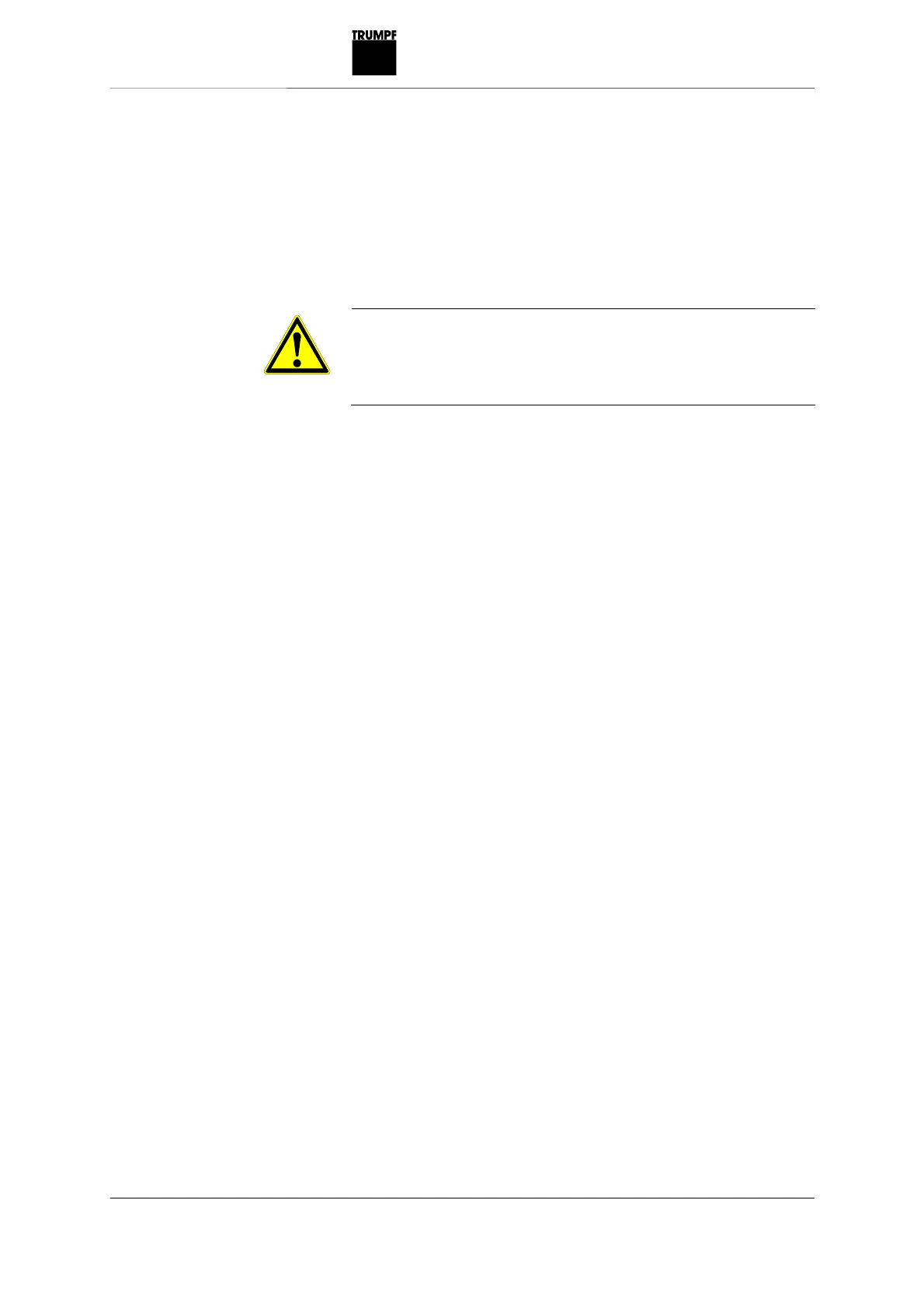B380EN05.DOC 4BHydraulic system 5-41
Hydraulics hose lines
(see section 4.1, p. 5-34)
Mainten
ance interval: Every 2000 operating hours, especially
clamp hose.
Danger
Risk of injury due to a bursting hydraulic hose flying around!
¾ Check all hydraulic hoses according to the maintenance
instructions.
¾ In case of a doubt, replace the hydraulic hose line.
Note
The hydraulic hoses should be checked by qualified personnel to
ensure safe operating standards. This check should also be carried
out before the first machine start-up.
Examples of possible defects to hydraulics hose lines:
• Damage to the outer layer extending up to the inner lining (e.g.
abrasions, cuts or tears).
• Brittleness of the outer layer (crack formation of the hose
material).
• Deformations which do not correspond to the natural form of
the hose in its pressurized or depressurized state or when
bent, e.g. separation of layers, bubble formation, crush areas,
kinks.
• Leaks
• The installation requirements were not met.
• Dislodging of the hose from the fitting.
• The fitting is damaged or deformed, which reduces the function
and tensile strength of the fitting or the connection between the
hose and fitting.
• Corrosion of the fittings; this results in impairing the
functionality and resistance of the fittings.
• The shelf life and period of use (according to ZH 1/74) have
been exceeded.
Check the hydraulic hose
lines

